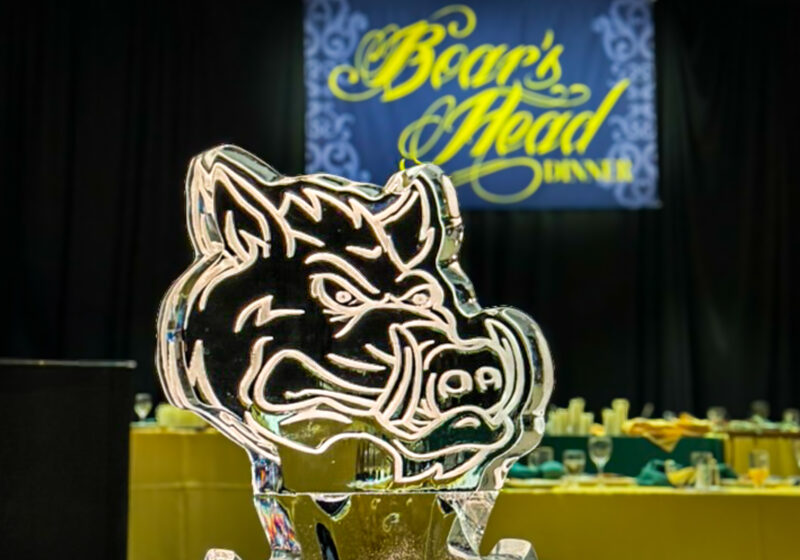As the saying goes, ?If you can?t go to the Baseball Hall of Fame, bring the Baseball Hall of Fame to you.?
Well, maybe that?s not exactly how the saying goes, but Meliora Weekend did bring the Baseball Hall of Fame ? or at least part of it ? to UR.
Hall of Fame President Dale Petroskey spoke at a special viewing of the exhibit last Thursday.
?You are in the presence of Babe Ruth, Lou Gehrig, Sandy Koufax, Stan Musial, Al Kaline and Tom Seaver,? Petroskey said.
While we were not in the presence of the men themselves, we were certainly in the presence of their history, their legend and their greatness.
The first thing I saw was a jersey worn by Ted Williams in 1960. The ?Splendid Splinter? hit .316 with 29 homers that season for the Red Sox at age 42.
Next to that was a jersey that Koufax wore when he went 27-9 with a 1.73 ERA and 317 strikeouts in 1966.
That season ended a five-year span in which he went 111-34 with 1,444 strikeouts and three unanimous Cy Young awards for the Dodgers.
It also ended his career after just 12 seasons.
In the same case was one of the bats Carl Yastrzemski used to win the Triple Crown and lead the Red Sox to ?The Impossible Dream? in 1967.
Behind that glass were four other items from immortal outfielders.
There was a ball that Mickey Mantle auto-graphed, a jersey worn by Kaline, a pair of red shoes with blue laces worn by Yaz and a glove that Teddy Ballgame used.
In the next case was a Cincinnati Reds jersey worn by Seaver in 1980, the year in which he ended his streak of 13 seasons with at least 215 innings pitched, an ERA under 3.25 and more than 10 wins.
Next to that jersey were shoes used by Mike Schmidt in 1973, his first full season.
He only hit .196 with 18 homers that year, but he would lead the league in long balls the next three seasons and six times in his career.
Looking down at the bottom shelf, I saw a jersey that Hank Aaron wore in 1972 when he hit more than 30 home runs for the 13th time.
Folded up next to that was an Astros jersey that Nolan Ryan wore in 1983. The orange-and-yellow jersey was one of the ugliest ever made, but the memories of the unhittable Texan are so beautiful.
There was also a jersey that Brooks Robinson wore in 1975, the season that earned him his 16th and final Gold Glove award.
Across the room, a jersey worn by Gehrig in 1939 stood out. Perhaps it is even the jersey he wore when he told a tearful crowd at Yankee Stadium that he considered himself the luckiest man on the face of the earth.
Also in that case was a jersey that Willie Mays wore in 1957, a year that shows how great an all-around player Mays was.
The ?Say Hey Kid? hit .333 with 35 homers and 97 RBIs, led the league with 20 triples and 38 steals and won the first of 12 straight Gold Glove awards.
The final case held the first baseman?s mitt that George Sisler used while he cranked out a record 257 hits in 1920.
The letters of the words ?New York? on Christy Matthewson?s jersey were faded from age, but the accomplishments of the first baseball hero have not faded at all.
The lower shelf held a glove that Ty Cobb used in 1912, when he batted over .400 for the second year in a row.
Next to that was a ball that the ?Georgia Peach? signed in 1956, when he still held the career records for average, hits, runs, steals and games played.
The exhibit also featured balls signed by pitchers Bob Gibson and Bob Feller, a mask that Cubs catcher Gabby Hartnett wore, a glove used by pitcher Herb Pennock, spikes worn by Rogers Hornsby and Babe Ruth, a jersey and bat from Musial and a bat that Honus Wagner used.
The best item in the exhibit, however, was also the last one I saw. It was a jersey showing nothing but a blue number three on a background of pinstripes.
An image immediately popped into my head ? or maybe it was a video playing on the glass ? of the great Bambino striding towards home plate. The Babe stepped to the plate, knocked his bat against his cleats and pointed to center field.
Ruth then whipped the heavy stick around like a twig and the ball disappeared obediently into the far reaches of the center field bleachers.
I do not know if that is what really happened, but there was nobody to tell me otherwise. So I enjoyed the thought, just as I enjoyed the many images that each artifact conjured in my mind.
Jacobs can be reached at bjacobs@campustimes.org.


